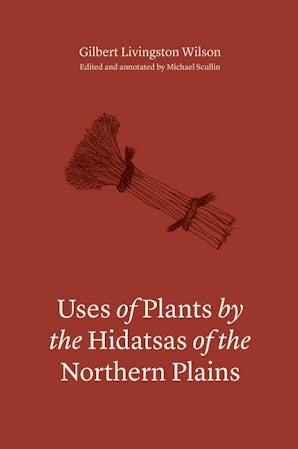
472 pages
71 figures, 1 map
July 2014
978-0-8032-6775-6
$65.00 Add to CartJuly 2014
978-0-8032-6774-9
$65.00 Add to CartIn 1916 anthropologist Gilbert L. Wilson worked closely with Buffalobird-woman, a highly respected Hidatsa born in 1839 on the Fort Berthold Reservation in western North Dakota, for a study of the Hidatsas’ uses of local plants. What resulted was a treasure trove of ethnobotanical information that was buried for more than seventy-five years in Wilson’s archives, now held jointly by the Minnesota Historical Society and the American Museum of Natural History in New York City. Wilson recorded Buffalobird-woman’s insightful and vivid descriptions of how the nineteenth-century Hidatsa people had gathered, prepared, and used the plants and wood in their local environment for food, medicine, smoking, fiber, fuel, dye, toys, rituals, and construction.
From courtship rituals that took place while gathering Juneberries, to descriptions of how the women kept young boys from stealing wild plums as they prepared them for use, to recipes for preparing and cooking local plants, Uses of Plants by the Hidatsas of the Northern Plains provides valuable details of Hidatsa daily life during the nineteenth century.
“Every aspect of life is part of this classic ethnology, from acquisition of food to spirituality to the raising of the four sacred wooden pillars of a new Earth Lodge. . . . Editor Michael Scullin does a wonderful job of weaving the many living parts of Buffalobird-woman’s story. . . . The book’s precision—many specific uses for many plants—is a pleasure to read. One gets a sense of a people who rose to the challenge of using what nature provided them to wrest a living from a demanding environment.”—Bruce Johansen, Jacob J. Isaacson Professor of Communication and Native American Studies at the University of Nebraska at Omaha and author of The Native Peoples of North America: A History